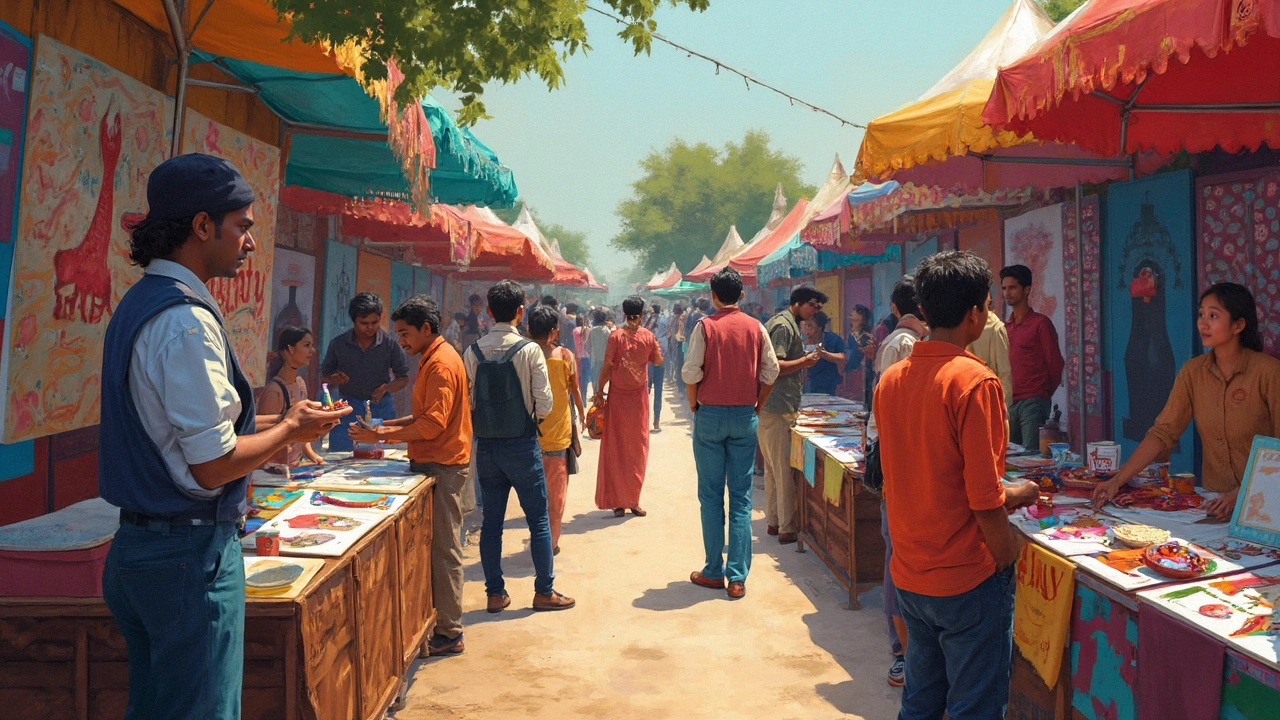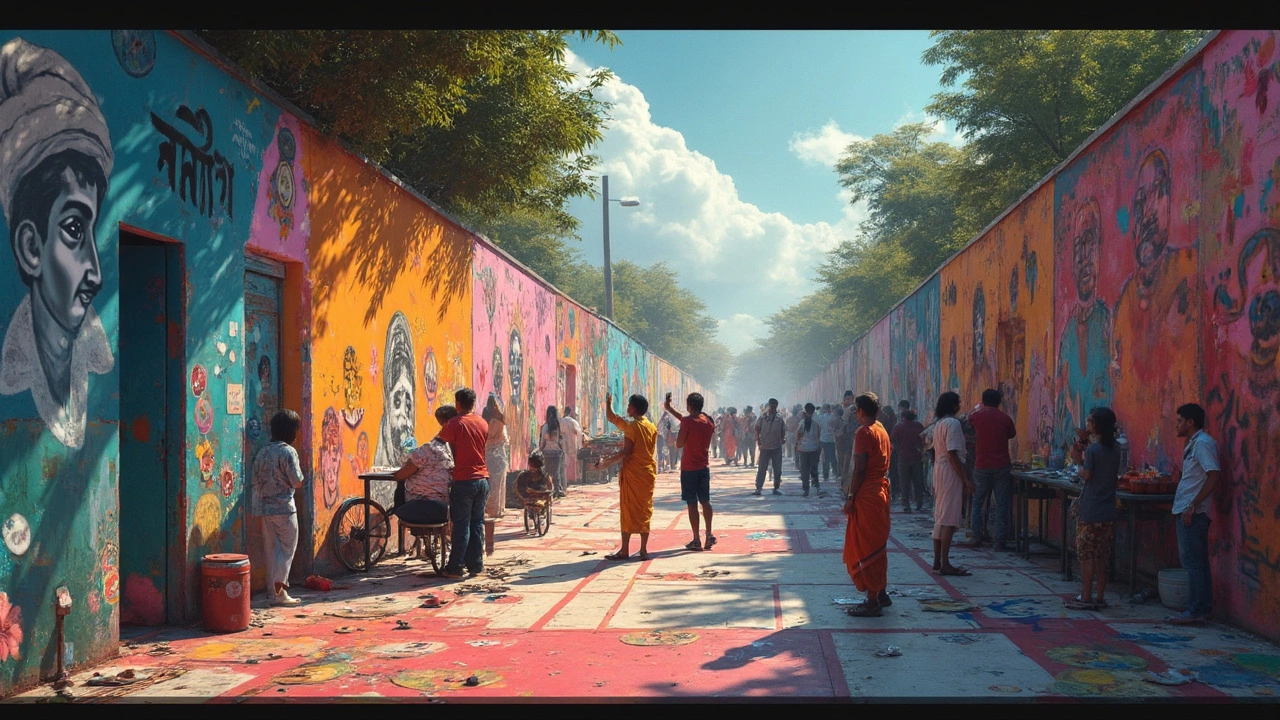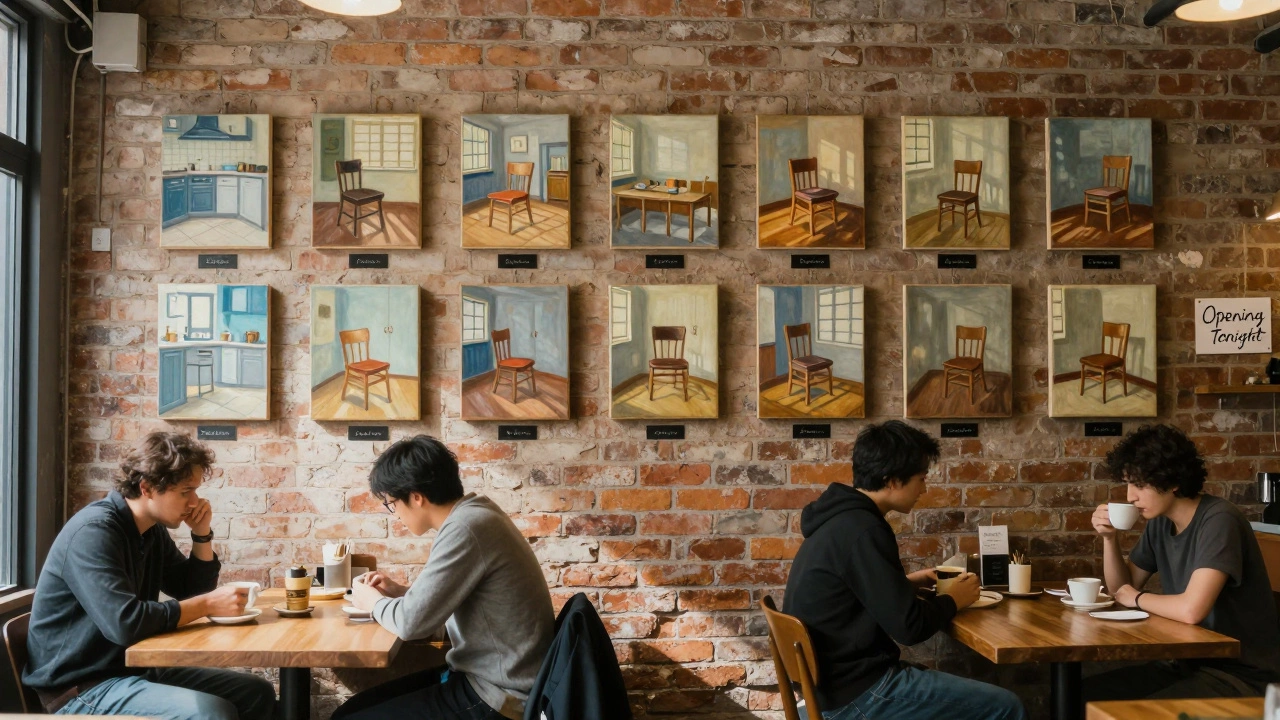Ever gazed at a vibrant mural on the side of a building and wondered if the artist behind it actually gets paid? Well, you're not alone. Street art is everywhere, coloring our cities and sparking conversations, but the financial side of it is a bit of a mystery.
Street artists have long been playing it smart, finding ways to earn money that go beyond just waiting for a check to land in the mail. They might snag commissions for specific projects, turning blank walls into masterpieces that businesses and communities are willing to pay for. Beyond that, many artists sell prints or merchandise featuring their work during exhibitions or online, giving fans a chance to own a slice of their creativity.
So yes, street artists can get paid, but it isn’t always a straightforward paycheck. Next, let’s dig deeper into the creative ways they make ends meet and the hurdles they have to jump over along the way.
- The Street Art Landscape
- Creative Ways to Earn
- Challenges Facing Street Artists
- Navigating Commissions and Sponsorships
- The Future of Street Art Income
The Street Art Landscape
Street art is a vibrant, ever-evolving form of expression that has transformed the urban landscape in cities around the world. From Banksy to Shepard Fairey, these artists have managed to capture public attention and sometimes even use their work to comment on social or political issues. But it's not all fame and recognition.
For the less celebrated, the street art scene can feel like an uncharted jungle. Artists often start by working in anonymity, plastering their creations on walls in the dead of night. Some cities, like Berlin and Melbourne, embrace street art, giving it a legal status and even offering designated areas. In contrast, others might still classify it as vandalism.
Street artists do more than just paint—they infuse cultural value into otherwise plain spaces. And as street art became more popular, it started to attract the attention of galleries and collectors. According to a 2024 survey, about 35% of street artists have had their work featured in a gallery
| City | Street Art-Friendly Areas |
|---|---|
| Berlin | Kreuzberg |
| Melbourne | Hosier Lane |
| New York | Williamsburg |
But hold on, before you pick up a spray can, remember that the landscape isn’t just a bed of roses. Many artists hustle through grassroots initiatives, participate in street art festivals, and use social media like Instagram to showcase their work and gather followers. It’s a buzzing ecosystem full of risks and rewards.
Creative Ways to Earn
So, let’s talk about how street artists can actually make some money. It’s not like there’s a textbook formula for it, but these artists have definitely gotten resourceful.
One popular route is creating commissioned work. Businesses and local councils sometimes hire street artists to spruce up their buildings with unique murals. This not only beautifies the area but also gives artists a chance to show off their style while getting paid. Commissioned projects are often the bread and butter for street artists. They negotiate terms, deliver their art for a fee, and might even gain some local fame out of it.
But wait, there's more! Some artists take to selling prints or digital versions of their work. This can happen through online platforms like Etsy or at local art fairs. You know those cool t-shirts or bags with eye-catching designs? Often, these are the result of clever artists monetizing their art.
Another creative way they earn is through workshops and classes. With street art becoming trendy, there's a demand for learning the craft. Artists offer classes where people can get their hands dirty and learn some spray-can techniques or stenciling from the pros.
Social media has also opened up new doors. By building an online presence, street artists can grab the attention of art enthusiasts and potential buyers around the world. Sponsorship opportunities might pop up from companies looking to associate their brands with vibrant urban art.
And here's a fun fact: Some street artists even collaborate with non-profit organizations for events, sometimes earning a stipend or percentage of funds raised. These events can not just provide income but also broaden the artist's network.
Here’s a sneak peek into how earnings can look:
| Income Source | Potential Earnings |
|---|---|
| Commissioned Work | $500 - $5,000 per piece |
| Print Sales | $20 - $200 per item |
| Workshops/Classes | $40 - $100 per participant |
| Sponsorship | Varies widely |
So, while the path isn’t paved with gold, street artists definitely know how to hustle and find ways to get paid doing what they love.

Challenges Facing Street Artists
Being a street artist might seem all colorful and carefree, but in reality, it comes with its own set of hurdles that can often be tough to leap over. First off, there's the legal stuff. Many cities have strict laws about where and when public art can be displayed. Forget to get the right permits, and you might find your work getting painted over or even get slapped with a fine. Yikes!
Besides the legal issues, there's also the question of finding the right spot. Prime locations can be surprisingly competitive because they get tons of foot traffic. More eyeballs mean more potential for recognition, but also higher chances of someone else claiming the space first.
Then there's the whole money situation. Unlike traditional mediums where you can just sell a painting, street art generally stays put. Making money from a mural isn’t simple unless you land commission work. Artists often rely on selling prints or merchandise, which requires additional effort and investment.
Equipment and supplies are another hiccup. High-quality sprays and paints aren't cheap, and replacing them regularly can dig into an already tight budget. This makes finding and maintaining financial support crucial.
And let’s not forget about the “respect” factor. Getting the art recognized as legitimate and valuable, rather than just ‘graffiti,’ can be an uphill battle in itself. Some artists struggle with gaining credibility, especially if their work is frequently removed or vandalized.
Street art earnings can vary greatly depending on location, demand, and artist reputation. Navigating these challenges requires not just talent but a certain street-savviness that goes beyond the canvas. Still, despite the hurdles, these artists continue to transform urban landscapes, one wall at a time.
Navigating Commissions and Sponsorships
Street artists often dream of their work reaching a wider audience and earning recognition. One way to achieve this is through commissions and sponsorships, which can also provide a steady stream of income.
Let's talk commissions first. A commission involves a client approaching an artist to create a specific piece, be it a mural on a restaurant wall or a unique piece for a private collector. Budgets can vary greatly based on the project's complexity, size, location, and the artist's reputation. On average, artists might earn anywhere from a few hundred to several thousand dollars for a well-executed piece. Whatever the scale, artists should draft a clear contract outlining expectations, timelines, and payment terms to avoid any misunderstandings.
Sponsorships, on the other hand, involve brands or organizations funding artists to create publicly visible works, often for advertising purposes or community projects. This is a win-win situation: artists gain exposure and financial support, while sponsors get creative marketing. Some famous street art festivals are known to partner with big brands to bring art-filled events to life, providing artists with both exposure and a paycheck.
Artists must remain savvy, though. It's essential to align with sponsors whose values resonate with one's art, preserving authenticity and ensuring the work remains genuine. It's not just about the paycheck; it's about finding the right fit that feels real.
Both commissions and sponsorships can elevate an artist's profile and lead to new opportunities. But the path isn't easy – it demands persistence and keen negotiation skills.

The Future of Street Art Income
The future is looking pretty dynamic for street artists when it comes to making a living. As more people and businesses recognize the value of street art, opportunities are popping up not just on walls but in digital spaces too.
One exciting development is the rise of Non-Fungible Tokens (NFTs) in art. With NFTs, artists can sell digital versions of their work, sometimes for sizeable sums. This isn't just a fad. Cities and galleries are hopping on board, turning digital art into profitable ventures for street artists.
Even corporations are catching on. Brands want to connect with millennial and Gen Z audiences in authentic ways, and street art collaborations are a hot ticket. Street artists get a chance to showcase their creativity in numerous campaigns, murals, and even product designs, which often come with lucrative deals.
In terms of public projects, more city councils are allocating budgets to revitalize urban areas with street art, seeing it as a way to boost tourism and community spirit. This means artists are more frequently finding paid gigs to beautify public spaces.
Additionally, platforms like Patreon are gaining traction, allowing fans to support artists directly, providing a steady stream of income outside traditional mediums.
Even though the scene is evolving, the key for street artists will be to stay adaptable and ready to seize these new opportunities. It's about leveraging digital tools, connecting with brands, and finding diverse revenue streams to thrive in this ever-changing landscape.





